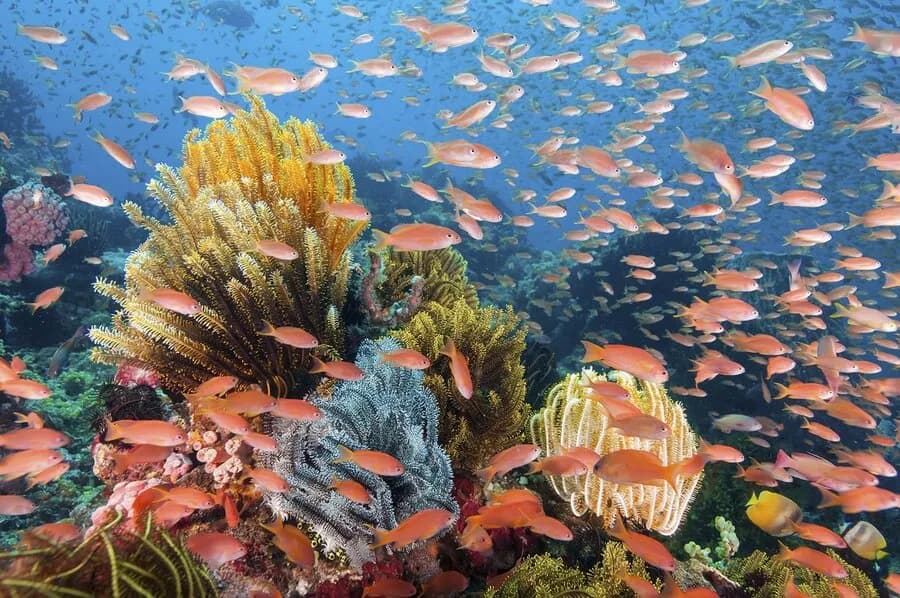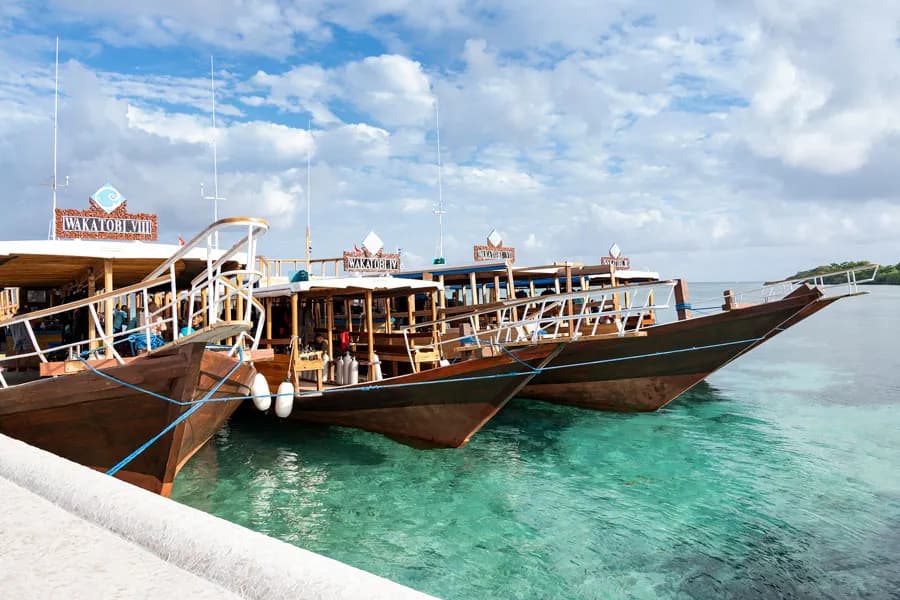
Diving in Wakatobi National Park offers pristine coral reefs, incredible biodiversity, vibrant marine life, and crystal-clear waters, making it a paradise for underwater photographers and nature lovers.
Scuba Dive Level
All Levels

Visibility
66 to 197 feet (20 to 60 meters)
Average Water Temperature
84
Stunning Reefs & Corals
Tropical Fish
Wakatobi National Park, Indonesia is an off the beaten path dive destination with world-class dive sites. Wakatobi diving includes the largest barrier reef in Indonesia and some of the most pristine reefs and wall diving in the world. Wakatobi National Park consists of over 100 islands and is named for the four largest: Wangi-Wangi, Kaledupa, Tomia, and Binongko.
Wakatobi is a highly protected area that encompasses some of the world's highest coral reef biodiversity. Expecta wide variety of coral formations, unique underwater topography, and rich fish and critter life whilediving Wakatobi's extremely healthy reefs.
Declared a national park in 1996, the Wakatobi Islands, officially known as Tukang Besi Archipelago, can be found in the Southeast Sulawesi province in Indonesia.
Bali (DPS) is the gateway for reaching Wakatobi.
Scuba diving in Wakatobi Natoinal Park is renowned for the incredible marine biodiversity, including over 900 fish species and over 700 coral reef species. Wakatobi National Park is made up of more than 100 islands and is named for its four larger islands: Wangi-Wangi, Kaledupa, Tomia and Binongko. Diving Wakatobi National Park is a magical experience with crystal clear waters, different types of reef groups like the atolls, barrier, or fringing reefs and you can even see mangrove forests. Divers can find both large and small marine life here. Experience world-class diving and five-star amenities at the Wakatobi Dive Resort, situated in a tranquil island setting.
Scuba diving Wakatobi National Park can be explored from a dive resort or a liveaboard. There are a few Wakatobi dive resorts available and plenty of liveaboard choices, which is why most divers choose to dive Wakatobi by liveaboard. As a remote area, a dive liveaboard will also give you the chance to see more of the region.
For those seeking a luxurious and intimate diving experience, the Pelagian liveaboard offers exclusive access to remote and pristine dive sites within the Wakatobi archipelago.
While diving in Wakatobi, you can expect to see beautiful vistas, pristine coral reefs, abundant colorful reef fish, and rare and unusual cryptic "critters". New species are still being discovered in this region! Reef scenery and marine life abundance/diversity are the two key points when scuba diving Wakatobi. Since the entire area has been turned into a sustainable protected marine park, marine life has increased to even greater numbers than before!
Learn more about the best diving in Indonesia here.
Here are some of the Wakatobi's best dive spots. Pick a dive site or read the entire list:
Ngurah Rai International Airport (DPS) in Bali is the main international gateway to Indonesia and the best starting point for reaching Wakatobi National Park. From Bali, take a domestic flight to Haluoleo Airport (WNI) in Kendari, Southeast Sulawesi, which is the closest airport to Wakatobi. If you have time, stay a few days in Bali to enjoy excellent diving and the island's rich culture.
Wakatobi Dive Resort is the most popular land-based option for scuba diving in Wakatobi.
Join a Wakatobi liveaboardto explore more of Wakatobi's wonderful underwater world. With a liveaboard, you can visit the remote areas that are not easily accessible from a resort. Pelagian is the only liveaboard to date that dives exclusively in Wakatobi.
There are also other liveaboard options in Wakatobi that offer routes in combination with other diving regions in Indonesia, notably Sulawesi, Halmahera and some parts of Raja Ampat. Check out our range of multi-region trips and Indonesian liveaboards.
Wakatobi is one of the more arid regions of Indonesia, and it is diveable year-round. However, there is a higher risk of rain in December-February, so we recommend diving Wakatobi in March-November. March-May and September-November are the peak season months for Wakatobi scuba diving.
Due to its remote location, diving and snorkeling are the most popular activities in Wakatobi. That being said, resorts offer additional facilities for any non-divers, including spa treatments, relaxing hammocks and extra "pampering" throughout your stay.
Explore Wakatobi National Park

